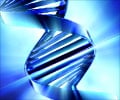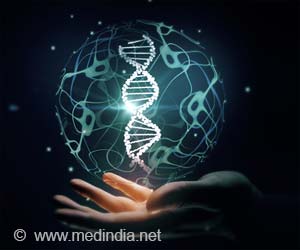IISc scientists develop hybrid nanoparticles (gold & copper) to detect and kill cancer cells using heat and sound waves. Potential game-changer in cancer treatment.
- Researchers at the Indian Institute of Science (IISc) have developed hybrid nanoparticles composed of gold and copper sulfide
- These nanoparticles can both generate heat to kill cancer cells and emit ultrasound waves for enhanced detection
- While the nanoparticles show promise in laboratory testing for lung and cervical cancers, further research and safety evaluations are needed before potential clinical applications
New Strategy to Identify and Eliminate Cancer Cells
Researchers at the Indian Institute of Science (IISc) have introduced an innovative strategy for the identification and elimination of cancer cells, particularly those composing solid tumors.Their approach involves the creation of hybrid nanoparticles, comprising both gold and copper sulfide, which possess the dual capability of inducing cancer cell death through heat and facilitating their detection via sound waves (1✔ ✔Trusted Source
Nanoparticles in Clinical Translation for Cancer Therapy
Go to source).
This was documented in 'ACS Applied Nano Materials', and underscores the critical importance of early intervention in combating cancer. The IISc team opted to merge the well-established applications of copper sulfide nanoparticles in cancer diagnosis with the potent anti-cancer effects of chemically modifiable gold nanoparticles.
Jaya Prakash, Assistant Professor at the Department of Instrumentation and Applied Physics (IAP), IISc, and co-first authors, Ph.D. students Madhavi Tripathi and Swathi Padmanabhan, expound on the multifaceted attributes of these particles.
When illuminated, these hybrid nanoparticles absorb light, generating lethal heat and producing singlet oxygen atoms that prove toxic to cells. This dual mechanism aims to effectively eradicate cancer cells, as elucidated by Jaya Prakash.
Cancer Diagnosis with Nanoparticles
Moreover, the nanoparticles exhibit diagnostic potential for specific types of cancer. Conventional imaging techniques like CT and MRI scans necessitate skilled radiologists for interpretation. The photoacoustic property of the nanoparticles allows them to absorb light and emit ultrasound waves, offering high-contrast detection of cancer cells upon their arrival. The resulting ultrasound waves yield superior image resolution, given their diminished scattering compared to light within tissues.Overcoming previous limitations associated with nanoparticle size, the IISc team employed an innovative reduction technique to deposit minuscule gold seeds onto the copper sulfide surface.
In this study, the nanoparticles underwent laboratory testing on lung and cervical cancer cell lines, marking a crucial milestone toward future clinical development.
“Cancer cure may be around the corner, suggesting a glimmer of hope in the realm of medical research.”
Reference:
- Nanoparticles in Clinical Translation for Cancer Therapy - (https://www.ncbi.nlm.nih.gov/pmc/articles/PMC8835852/)
Source-Medindia
















